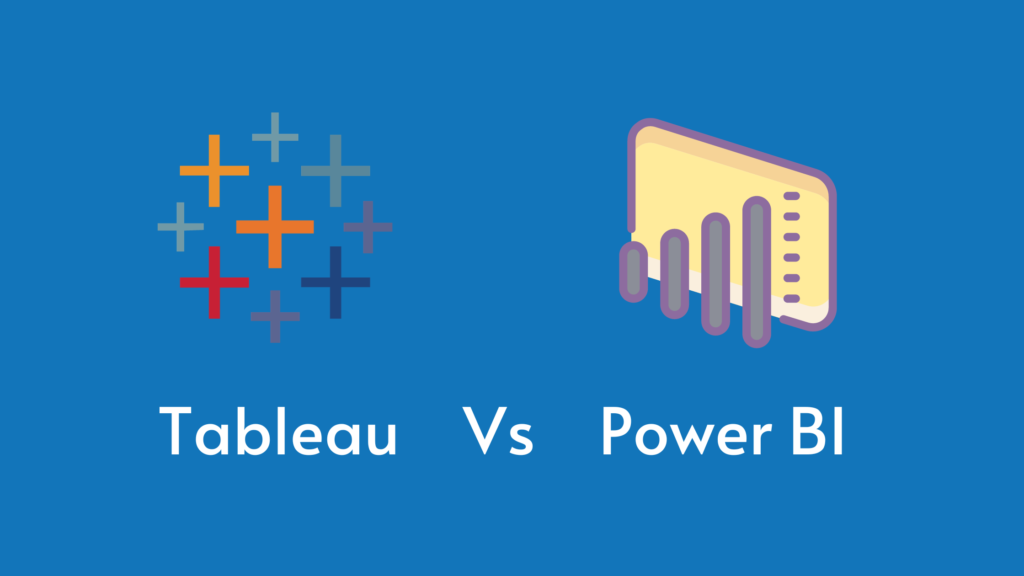Tableau vs. Power BI: Choosing the Right BI Tool

The rise of Business Intelligence tools posed a challenge to Microsoft to build its own business intelligence tool. Microsoft introduced Power BI to deliver compelling analytical capabilities to existing Microsoft Excel and upgrade it to be intelligent enough to generate interactive reports.
According to Gartner’s Magic Quadrant, Microsoft Power BI is one of today’s top business intelligence tools, chiefly because most IT firms rely on Power BI for their business analytics. As a result, the current IT industry finds a massive demand for Power BI Experts.
Tableau is a highly regarded and widely used data visualization and business intelligence (BI) software platform. It’s designed to help individuals and organizations explore, analyze, and visualize data to gain valuable insights and make informed decisions.
What is Power BI?
Power BI is a business analytics tool developed by Microsoft that helps you turn multiple unrelated data sources into valuable and interactive insights. These data may be in the form of an Excel spreadsheet or cloud-based/on-premises hybrid data warehouses. You can easily connect to all your data sources and share the insights with anyone.
Why should we use Power BI?
Power BI provides an easy way for anyone, including non-technical people, to connect, change, and visualize their raw business data from many different sources and turn it into valuable data that makes it easy to make smart business decisions.
Here are some of its key features:
Features of Power BI:
- Data Connectivity: Power BI offers extensive data connectivity options, allowing you to connect to a wide range of data sources, including databases, cloud services, and spreadsheets.
- Data Transformation: It provides tools for data transformation and shaping, making it easier to clean and prepare data for analysis.
- Data Visualization: Power BI offers a wide variety of customizable charts, graphs, and visuals to present data in a visually appealing and understandable manner.
- DAX Language: It includes the Data Analysis Expressions (DAX) language for creating custom calculations and measures.
- Natural Language Query: Users can ask questions in plain language and receive insights in the form of visuals or tables.
- Sharing and Collaboration: You can share reports and dashboards securely with colleagues or clients, even if they don’t have a Power BI license.
- Mobile Accessibility: Power BI has mobile apps for iOS and Android, enabling access to reports and dashboards on the go.
How is Power BI Useful?
Example: Imagine you work in sales. With Power BI, you can connect to your sales data, create interactive dashboards, and track your sales performance in real-time. You can easily identify trends, analyze customer behavior, and make data-driven decisions to boost revenue.
What is Tableau?
Tableau is a powerful data visualization and business intelligence tool developed by Tableau Software. It helps users explore, analyze, and visualize data. Here are its main features:
Features of Tableau:
- Data Connectivity: Tableau supports various data sources, including databases, spreadsheets, cloud services, and web data connectors.
- Drag-and-Drop Interface: Its intuitive interface allows users to create interactive dashboards and reports by simply dragging and dropping elements.
- Advanced Analytics: Tableau offers advanced analytical functions for in-depth data analysis, including forecasting, trend analysis, and clustering.
- Data Blending: You can combine data from multiple sources seamlessly, making it easier to work with diverse datasets.
- Natural Language Processing: Tableau offers natural language capabilities to help users ask questions and receive visual insights.
- Real-Time Data: It supports real-time data streaming, ensuring that your dashboards are always up to date.
How is Tableau Useful?
Example: Let’s say you manage a retail chain. Tableau can help you analyze sales data from multiple locations, compare store performance, and visualize customer demographics. With this information, you can optimize inventory, improve marketing strategies, and enhance the overall customer experience.
Difference between Power BI and Tableau (Tabular Form):
| Feature | Power BI | Tableau |
| Developer | Microsoft | Tableau Software |
| Data Connectivity | Extensive data source connectivity options | Broad range of data connectors |
| Data Transformation | Yes | Yes |
| Data Visualization | Rich visualizations, customizable visuals | Intuitive drag-and-drop interface |
| DAX Language | Yes | Advanced analytics and calculations |
| Natural Language Query | Yes | Yes |
| Sharing and Collaboration | Secure sharing, even without a license | Collaboration features for teamwork |
| Mobile Accessibility | Mobile apps for iOS and Android | Mobile support for on-the-go access |
| Pricing | Multiple pricing options, including free | Multiple pricing options, free trial |
Both Power BI and Tableau are exceptional tools for data analysis and visualization, but the choice between them often depends on specific needs, preferences, and existing infrastructure within an organization.

Leave a Reply